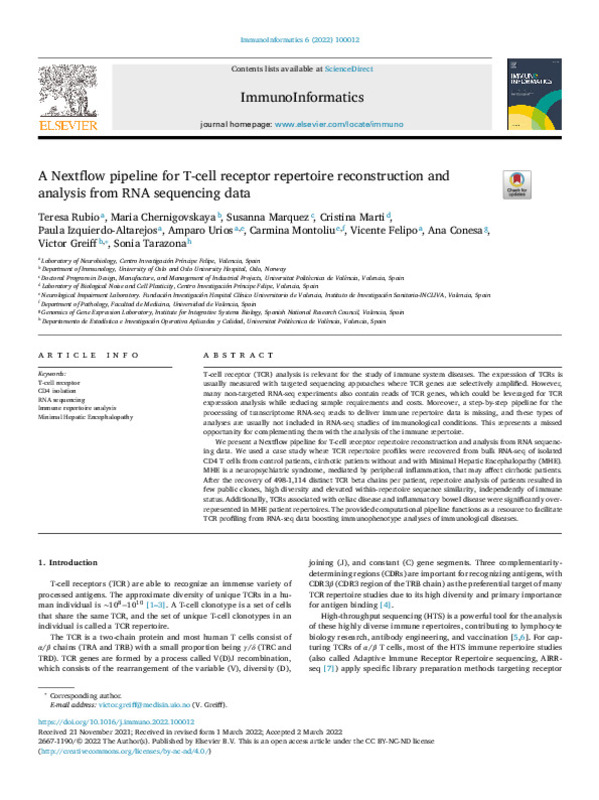JavaScript is disabled for your browser. Some features of this site may not work without it.
Buscar en RiuNet
Listar
Mi cuenta
Estadísticas
Ayuda RiuNet
Admin. UPV
A Nextflow pipeline for T-cell receptor repertoire reconstruction and analysis from RNA sequencing data
Mostrar el registro completo del ítem
Rubio, T.; Chernigovskaya, M.; Marquez, S.; Marti, C.; Izquierdo-Altarejos, P.; Urios, A.; Montoliu, C.... (2022). A Nextflow pipeline for T-cell receptor repertoire reconstruction and analysis from RNA sequencing data. ImmunoInformatics. 6:1-8. https://doi.org/10.1016/j.immuno.2022.100012
Por favor, use este identificador para citar o enlazar este ítem: http://hdl.handle.net/10251/192565
Ficheros en el ítem
Metadatos del ítem
| Título: | A Nextflow pipeline for T-cell receptor repertoire reconstruction and analysis from RNA sequencing data | |
| Autor: | Rubio, Teresa Chernigovskaya, Maria Marquez, Susanna Marti, Cristina Izquierdo-Altarejos, Paula Urios, Amparo Montoliu, Carmina Felipo, Vicente Conesa, Ana Greiff, Victor | |
| Entidad UPV: |
|
|
| Fecha difusión: |
|
|
| Resumen: |
[EN] T-cell receptor (TCR) analysis is relevant for the study of immune system diseases. The expression of TCRs is usually measured with targeted sequencing approaches where TCR genes are selectively amplified. However, ...[+]
|
|
| Palabras clave: |
|
|
| Derechos de uso: | Reconocimiento - No comercial - Sin obra derivada (by-nc-nd) | |
| Fuente: |
|
|
| DOI: |
|
|
| Editorial: |
|
|
| Versión del editor: | https://doi.org/10.1016/j.immuno.2022.100012 | |
| Código del Proyecto: |
...[+] |
|
| Agradecimientos: |
We acknowledge generous support by The Leona M. and Harry
B. Helmsley Charitable Trust (#2019PG-T1D011, to VG), UiO WorldLeading Research Community (to VG), UiO:LifeScience Convergence
Environment Immunolingo (to VG), EU ...[+]
|
|
| Tipo: |
|









